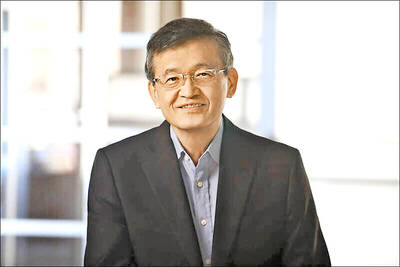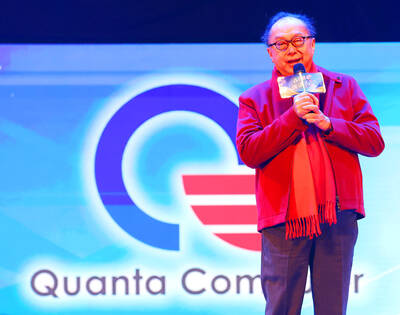The US Department of Treasury sold its last shares in General Motors (GM) on Monday, ending the dramatic rescue of the auto giant at the height of the financial crisis five years ago.
The US Treasury took a loss of more that US$10 billion on the US$49.5 billion bailout, but said that saving the US auto industry, the jobs of millions of auto workers and the pensions of many retirees was worth it.
The 2008 rescue, highly controversial at the time, “helped stabilize the auto industry, and prevent another Great Depression,” US Secretary of the Treasury Jacob Lew said.
He said that US President Barack Obama “understood that inaction could have cost the broader economy more than one million jobs, billions in lost personal savings, and significantly reduced economic production.”
“Less than five years later, each of the Big Three automakers is now strong enough to stand on its own. They’re profitable for the first time in nearly a decade. The industry has added more than 372,000 new jobs — its strongest growth since the 1990s,” Obama said in a separate statement.
In addition, “GM has now repaid every taxpayer dollar my administration committed to its rescue, plus billions invested by the previous administration,” he said.
In late 2008 the administration of then-US president George W. Bush began the rescue of the industry which was then expanded into a comprehensive program by his successor, Obama.
It was attached to the massive Troubled Asset Relief Program set up to rescue banks, amid worries that the collapse of the automobile industry would plunge the US economy into deeper recession.
The government took financial control of both GM, the largest US automaker, and Chrysler.
Canadian authorities, worried about auto industry job losses on their side of the border, also took part in the rescues.
The No. 2 producer, Ford, opted to stand on its own — though analysts say that Ford benefited from the rescue of the two competitors, bolstering general confidence as well as saving the parts industry that all three share.
Treasury officials said the bailout of GM and Chrysler, which it exited earlier with the sale of most of its shares to Italian automaker Fiat, would leave it with a net loss of about US$15 billion.
In addition, the government also took over GM’s finance arm, now bank holding company Ally Financial.
In a new study, the US Center for Automotive Research said the government’s loss was paltry compared with the losses risked by letting GM and Chrysler go under.
Not including the potential impact on the parts sector, the study said the US government “saved or avoided the loss of US$105.3 billion in transfer payments and the loss of personal and social insurance tax collections — or 768 percent of the net investment,” the study said.
GM chairman and chief executive Dan Akerson expressed gratitude on Monday for the government support.
Meanwhile, struggling automaker Holden yesterday said it needed long-term government support to remain in Australia, following a report that its US parent GM had decided to close the unit’s two plants in the country.
However, while there remains uncertainty about the future of the firm’s manufacturing in Australia, Holden said it had made no decision.
The Wall Street Journal, citing people close to the plans, reported on Monday that GM intended to shut down its two Australian factories, while also slashing output in South Korea, as part of a plan to weed out its unprofitable operations.
The move would be a blow to the country’s car industry after US giant Ford said in May it would stop making vehicles at its unprofitable Australian factories in 2016, with the loss of 1,200 jobs, and bringing an end to an era that began in 1925.

Intel Corp chief executive officer Lip-Bu Tan (陳立武) is expected to meet with Taiwanese suppliers next month in conjunction with the opening of the Computex Taipei trade show, supply chain sources said on Monday. The visit, the first for Tan to Taiwan since assuming his new post last month, would be aimed at enhancing Intel’s ties with suppliers in Taiwan as he attempts to help turn around the struggling US chipmaker, the sources said. Tan is to hold a banquet to celebrate Intel’s 40-year presence in Taiwan before Computex opens on May 20 and invite dozens of Taiwanese suppliers to exchange views

Application-specific integrated circuit designer Faraday Technology Corp (智原) yesterday said that although revenue this quarter would decline 30 percent from last quarter, it retained its full-year forecast of revenue growth of 100 percent. The company attributed the quarterly drop to a slowdown in customers’ production of chips using Faraday’s advanced packaging technology. The company is still confident about its revenue growth this year, given its strong “design-win” — or the projects it won to help customers design their chips, Faraday president Steve Wang (王國雍) told an online earnings conference. “The design-win this year is better than we expected. We believe we will win

Quanta Computer Inc (廣達) chairman Barry Lam (林百里) is expected to share his views about the artificial intelligence (AI) industry’s prospects during his speech at the company’s 37th anniversary ceremony, as AI servers have become a new growth engine for the equipment manufacturing service provider. Lam’s speech is much anticipated, as Quanta has risen as one of the world’s major AI server suppliers. The company reported a 30 percent year-on-year growth in consolidated revenue to NT$1.41 trillion (US$43.35 billion) last year, thanks to fast-growing demand for servers, especially those with AI capabilities. The company told investors in November last year that

Power supply and electronic components maker Delta Electronics Inc (台達電) yesterday said it plans to ship its new 1 megawatt charging systems for electric trucks and buses in the first half of next year at the earliest. The new charging piles, which deliver up to 1 megawatt of charging power, are designed for heavy-duty electric vehicles, and support a maximum current of 1,500 amperes and output of 1,250 volts, Delta said in a news release. “If everything goes smoothly, we could begin shipping those new charging systems as early as in the first half of next year,” a company official said. The new